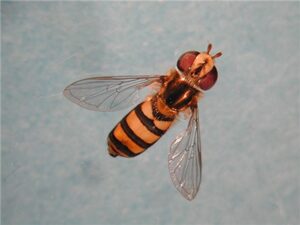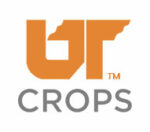LINKS
Syrphid Flies (syrphid or flower flies)
Scott Stewart (University of Tennessee) and Blake Layton (Mississippi State University), Department of Entomology and Plant Pathology
General Comments:
 The larvae of some syrphid flies are specialized predators of aphids, including the cotton aphid. Although these larvae are usually not present in sufficient numbers to control aphid populations by themselves, they are a component of the natural enemy complex that helps keep pest populations below damaging levels.
The larvae of some syrphid flies are specialized predators of aphids, including the cotton aphid. Although these larvae are usually not present in sufficient numbers to control aphid populations by themselves, they are a component of the natural enemy complex that helps keep pest populations below damaging levels.
Description:
Of the predatory syrphid flies found in cotton, the adults are often confused for some kind of small wasp or bee, as they are often colored similarly with alternating stripes of yellow and black across the abdomen. Also like bees, adults are often observed hovering about flowers. However, flies only have one pair of wings, unlike wasps and bees, and can not sting. Allograpta species are common, and adults are about 1/4-inch long. The larvae are legless maggots seen on the undersides of leaves or other places where aphids are found. They are tapered toward the head and may be light brown to green in color, reaching a length of about 1/3 inch. Larvae complete their development in as little as two weeks, depending upon the temperature, and may eat as many as 400 aphids each. In some species, the pupae are found on plants, but in others, larvae leave the plant to pupate in the soil.
Prey (Hosts):
As noted, the larvae of these flies feed primarily on aphids. However, they will also feed on thrips, whiteflies, small caterpillars and other small insects.







